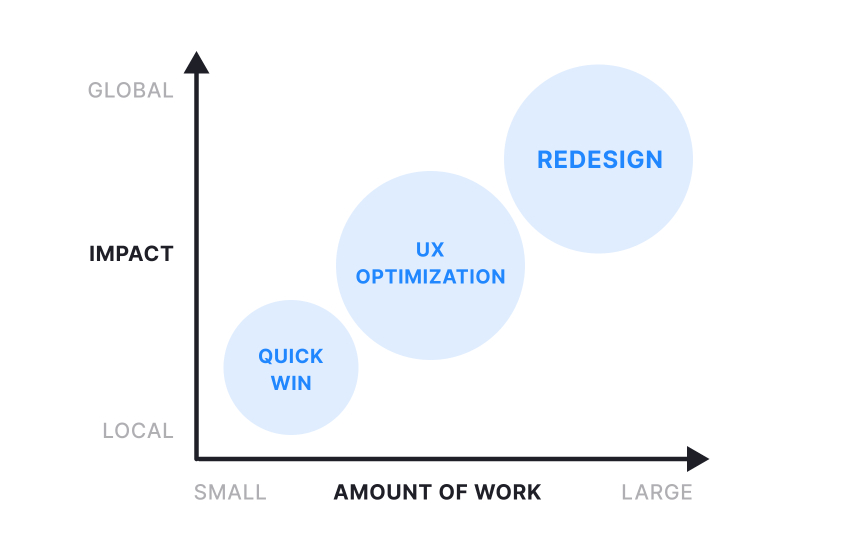Managing UX debt
UX debt refers to the accumulation of inconsistencies, usability issues, and design compromises that degrade the product experience over time. Like technical debt, it occurs when teams take shortcuts for speed, make decisions without proper user validation, or allow inconsistencies to proliferate. Left unaddressed, UX debt makes products harder to use, less cohesive, and more difficult to enhance. Identifying UX debt requires evaluation from both user and system perspectives:
- User-centered evaluation examines pain points in common flows, confusing interactions, and inconsistent behaviors.
- System-centered evaluation looks at inconsistent component usage, visual deviations from the design system, redundant patterns, and accessibility issues.
Effective management starts with documentation. Teams should maintain a UX debt inventory, capturing each issue, its user impact, estimated effort to fix, and relationship to other problems. This inventory should be visible alongside technical debt during planning discussions. Prioritization means balancing user impact with strategic alignment. High-impact issues affecting core user journeys should be addressed first.[1]
Pro Tip: Allocate 10-20% of each sprint to addressing UX debt as an investment in future productivity.
References
- UX Debt: How to Identify, Prioritize, and Resolve | Nielsen Norman Group


